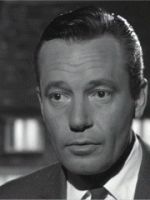Sheila Florance est une Actrice Australienne née le 24 juillet 1916 à St Kilda (Australie)

Sheila Florance (born Sheila Mary Florance; 24 July 1916 – 12 October 1991) was an Australian theatre, film and television actress. She was best known for her performance as elderly, alcoholic convict Lizzie Birdsworth in the television series Prisoner. Born in Melbourne, she married an Englishman in 1934 and sailed to London. She spent World War II in England; her first husband died in action following the 1944 Normandy landings.
Florance returned to Australia in 1948, where she became a theatre actress. She later appeared in Australian films and television series. Florance had a reputation as a teller of extraordinary stories and in the 1950s she was known for her house parties. Florance died in 1991 from cancer, a week after receiving the AACTA Award for Best Actress in a Leading Role for her last film.
Florance was born on 24 July 1916 at 42 Carrington Grove, East St Kilda, Melbourne. She was the eldest daughter of costumier Frances Josephine (née Lalor) and school teacher James Horn Florance. Educated at Presentation College, Windsor, she left school aged 15 and with her father's support she began to take an interest in acting. To further her theatrical ambitions she took small parts with the Melbourne Little Theatre at St Chad's in South Yarra.
One of her first successes was in February 1935 when she appeared in John Hastings Turner's play The Spot on the Sun, which was staged by and starred visiting English actress Ada Reeve.
First marriage and move to England
On 19 April 1934, at the age of 17 and following a whirlwind romance, Florance married visiting Englishman Roger Lightfoot Oyston at Holy Angels Catholic Church, Balaclava. The following year, Florance and Oyston had a daughter, Susan. The family travelled to England, where they lodged briefly with Roger’s parents in Deepdale Avenue, Scarborough, Yorkshire, before moving to a house in Shaftesbury Avenue, Bridlington. The couple's first son, Peter was born on 20 May 1938.
With war in Europe looming, Roger enlisted in the Green Howards as an officer cadet and received his commission to the 2nd Derbyshire Yeomanry in July 1941. Florance joined the Women's Land Army and moved to live and work on a farm near Bempton. She often recounted a tale in which she had a second daughter, Bridget, who was blown out of her arms during an air raid on Bristol in 1941, leading to Florance requiring psychiatric care. No record of Bridget's birth or death has survived, and her eldest son Peter was never able to confirm the story.
In 1942, Susan and Peter were sent away to boarding schools but later returned to Mill Farm. In June 1944, Roger Oyston, now a captain in the 2nd Derbyshire Yeomanry, was second in command of C squadron. He landed in France as part of the Invasion of Normandy and went missing in action around Escoville near Pegasus Bridge on 19 June 1944. Florance was informed that her husband was missing but she did not receive the telegram informing of his death until the following year. The couple's second son, Philip Michael, was born in September 1944. After returning to Australia, Florance often told stories that while in Britain she had worked with Emlyn Williams' company British Drama League, the Council for the Encouragement of Music and the Arts (CEMA) and the Oxford Repertory Company. She also said she had worked with Noël Coward, Robert Donat and Dame Sybil Thorndike.
Second marriage and return to Australia
After the war, Florance met Polish airman John (Jan) Adam Balawaider who had served in the Royal Air Force with 158 squadron until he was badly injured during an attack on Wanne-Eickel on 2 February 1945. On 3 September 1946, he and Florance married at Holy Cross Church in Hucknall, Nottingham.
The couple decided to leave Britain for Australia. There were complications; having married Balawaider, Florance had acquired Polish nationality and was classified as an alien. Balawaider had war service credentials and was able to fly ahead to Australia, but Florance had to deal with official obstacles before she and the three children could embark on the Aberdeen & Commonwealth Line vessel "Esperance Bay" on 6 March 1948. On arrival in Fremantle, Peter Oyston recalls that his mother "ran down the gangplank ahead of everyone else and against the orders of the Captain or the crew, and knelt on the soil in the port, and then grabbed a handful of gravel and started eating it, and saying, 'Oh, Australia, Australia, I'm home, I'm home. My lovely country' " Florance was soon reunited with her husband and the family moved into a run-down wooden cottage in Prahan, a suburb of Melbourne.
Around 1954, parties were held at Florance's house, referred to as 'The Hovel'. According to Peter Oyston: over those years my sister and I worked out that we had 82 callers a week, not counting those who came more than once. It was constant open house. My stepfather would start a party with his muso friends while my mother was at the theatre. And then my mother would bring back the cast and any people who came to see the shows. And the taxi drivers and, if the police called to quieten us up, then the police would be invited in and they'd join the party too. It really was an extraordinary time.
In March 1954, Florance's 18-year-old daughter Susan Oyston fell from the roof of the nine-storey National Bank building in Collins Street, Melbourne, where she worked. Florance said at the time she believed the fall was accidental, saying, "She had her bags all packed to go to Cairns for a holiday, and was looking forward to it eagerly ... She often went [onto the roof] in the early morning, and in her lunch-hour to enjoy the sunshine and the breeze". She later told interviewer Sam Newman she thought it was probably suicide and that she had failed her daughter. Some time after Florance's own death, evidence emerged that Susan Oyston may have been murdered.
When Florance stopped working on Prisoner in 1983 she hoped to spend a last couple of years with her husband John, who had suffered much of his life from injuries sustained during the war. He was now seriously unwell and died from cancer in October of that year.
Death
Sheila Florance died aged 75 on 12 October 1991, nine days after her son Philip had represented her at Sydney Opera House to receive on her behalf the Best Actress in a Leading Role award for her role in her final film, A Woman's Tale. Her friend and colleague Bud Tingwell wrote her obituary and said, "nothing I write can express properly the admiration and love for Sheila Florance felt by so many of us who knew her ... This week at a service of celebration for Sheila Florance in St Kilda, Melbourne, where she was born and lived, the church was packed. She had a full house and a standing ovation."
Source : Wikidata
Sheila Florance

- Infos
- Photos
- Meilleurs films
- Famille
- Personnages
- Récompenses
Nom de naissance Sheila Mary Florance
Nationalité Australie
Naissance 24 juillet 1916 à St Kilda (Australie)
Mort 12 octobre 1991 (à 75 ans)
Nationalité Australie
Naissance 24 juillet 1916 à St Kilda (Australie)
Mort 12 octobre 1991 (à 75 ans)
Florance returned to Australia in 1948, where she became a theatre actress. She later appeared in Australian films and television series. Florance had a reputation as a teller of extraordinary stories and in the 1950s she was known for her house parties. Florance died in 1991 from cancer, a week after receiving the AACTA Award for Best Actress in a Leading Role for her last film.
Biographie
Early lifeFlorance was born on 24 July 1916 at 42 Carrington Grove, East St Kilda, Melbourne. She was the eldest daughter of costumier Frances Josephine (née Lalor) and school teacher James Horn Florance. Educated at Presentation College, Windsor, she left school aged 15 and with her father's support she began to take an interest in acting. To further her theatrical ambitions she took small parts with the Melbourne Little Theatre at St Chad's in South Yarra.
One of her first successes was in February 1935 when she appeared in John Hastings Turner's play The Spot on the Sun, which was staged by and starred visiting English actress Ada Reeve.
First marriage and move to England
On 19 April 1934, at the age of 17 and following a whirlwind romance, Florance married visiting Englishman Roger Lightfoot Oyston at Holy Angels Catholic Church, Balaclava. The following year, Florance and Oyston had a daughter, Susan. The family travelled to England, where they lodged briefly with Roger’s parents in Deepdale Avenue, Scarborough, Yorkshire, before moving to a house in Shaftesbury Avenue, Bridlington. The couple's first son, Peter was born on 20 May 1938.
With war in Europe looming, Roger enlisted in the Green Howards as an officer cadet and received his commission to the 2nd Derbyshire Yeomanry in July 1941. Florance joined the Women's Land Army and moved to live and work on a farm near Bempton. She often recounted a tale in which she had a second daughter, Bridget, who was blown out of her arms during an air raid on Bristol in 1941, leading to Florance requiring psychiatric care. No record of Bridget's birth or death has survived, and her eldest son Peter was never able to confirm the story.
In 1942, Susan and Peter were sent away to boarding schools but later returned to Mill Farm. In June 1944, Roger Oyston, now a captain in the 2nd Derbyshire Yeomanry, was second in command of C squadron. He landed in France as part of the Invasion of Normandy and went missing in action around Escoville near Pegasus Bridge on 19 June 1944. Florance was informed that her husband was missing but she did not receive the telegram informing of his death until the following year. The couple's second son, Philip Michael, was born in September 1944. After returning to Australia, Florance often told stories that while in Britain she had worked with Emlyn Williams' company British Drama League, the Council for the Encouragement of Music and the Arts (CEMA) and the Oxford Repertory Company. She also said she had worked with Noël Coward, Robert Donat and Dame Sybil Thorndike.
Second marriage and return to Australia
After the war, Florance met Polish airman John (Jan) Adam Balawaider who had served in the Royal Air Force with 158 squadron until he was badly injured during an attack on Wanne-Eickel on 2 February 1945. On 3 September 1946, he and Florance married at Holy Cross Church in Hucknall, Nottingham.
The couple decided to leave Britain for Australia. There were complications; having married Balawaider, Florance had acquired Polish nationality and was classified as an alien. Balawaider had war service credentials and was able to fly ahead to Australia, but Florance had to deal with official obstacles before she and the three children could embark on the Aberdeen & Commonwealth Line vessel "Esperance Bay" on 6 March 1948. On arrival in Fremantle, Peter Oyston recalls that his mother "ran down the gangplank ahead of everyone else and against the orders of the Captain or the crew, and knelt on the soil in the port, and then grabbed a handful of gravel and started eating it, and saying, 'Oh, Australia, Australia, I'm home, I'm home. My lovely country' " Florance was soon reunited with her husband and the family moved into a run-down wooden cottage in Prahan, a suburb of Melbourne.
Around 1954, parties were held at Florance's house, referred to as 'The Hovel'. According to Peter Oyston: over those years my sister and I worked out that we had 82 callers a week, not counting those who came more than once. It was constant open house. My stepfather would start a party with his muso friends while my mother was at the theatre. And then my mother would bring back the cast and any people who came to see the shows. And the taxi drivers and, if the police called to quieten us up, then the police would be invited in and they'd join the party too. It really was an extraordinary time.
In March 1954, Florance's 18-year-old daughter Susan Oyston fell from the roof of the nine-storey National Bank building in Collins Street, Melbourne, where she worked. Florance said at the time she believed the fall was accidental, saying, "She had her bags all packed to go to Cairns for a holiday, and was looking forward to it eagerly ... She often went [onto the roof] in the early morning, and in her lunch-hour to enjoy the sunshine and the breeze". She later told interviewer Sam Newman she thought it was probably suicide and that she had failed her daughter. Some time after Florance's own death, evidence emerged that Susan Oyston may have been murdered.
When Florance stopped working on Prisoner in 1983 she hoped to spend a last couple of years with her husband John, who had suffered much of his life from injuries sustained during the war. He was now seriously unwell and died from cancer in October of that year.
Death
Sheila Florance died aged 75 on 12 October 1991, nine days after her son Philip had represented her at Sydney Opera House to receive on her behalf the Best Actress in a Leading Role award for her role in her final film, A Woman's Tale. Her friend and colleague Bud Tingwell wrote her obituary and said, "nothing I write can express properly the admiration and love for Sheila Florance felt by so many of us who knew her ... This week at a service of celebration for Sheila Florance in St Kilda, Melbourne, where she was born and lived, the church was packed. She had a full house and a standing ovation."
Le plus souvent avec
Filmographie de Sheila Florance (12 films)
Actrice
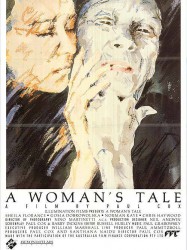
A Woman's Tale (1991)
, 1h33Réalisé par Paul Cox
Genres Drame, Comédie
Acteurs Sheila Florance, Gosia Dobrowolska, Norman Kaye, Chris Haywood
Note71%





Martha (Florance) is an elderly woman living alone in her flat and dying of cancer. Her love of life leads to an ambivalence about her age; her unique moral code leads to her playing cupid for her friend and nurse Anna (Dobrowolska) and Anna’s married lover (Gray); her worrisome son (Haywood) wants her to move into a home; her neighbour Billy (Kaye) has dementia.
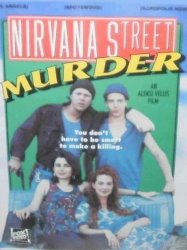
Nirvana Street Murder (1990)
, 1h15Genres Comédie
Acteurs Mark Little, Ben Mendelsohn, Mary Coustas, Irène Papas, Sheila Florance, Daniel Pollock
Note65%






Becca (1989)
, 1h30Réalisé par Paul Turner
Genres Drame, Historique
Acteurs Beth Robert, Gary Sweet, Lynette Curran, Sheila Florance
Rôle Becca (old)
Note59%






The Tale of Ruby Rose (1988)
, 1h40Genres Drame, Thriller, Horreur
Thèmes La mer, Transport
Acteurs Chris Haywood, Martyn Sanderson, Sheila Florance
Note66%





In the wild and isolated wilderness of the Tasmanian highlands, Ruby Rose is overcome by her fear of darkness. Ruby cries out to the elemental spirits that surround her. She is driven to take a harrowing journey out of the mountains to seek help from her lost grandmother.

Cactus (1986)
, 1h33Réalisé par Paul Cox
Origine Australie
Genres Drame, Romance
Acteurs Isabelle Huppert, Norman Kaye, Monica Maughan, Sheila Florance, Julia Blake, Maurie Fields
Rôle Martha
Note61%






Mad Max (1979)
, 1h28Réalisé par George Miller
Origine Australie
Genres Science-fiction, Thriller, Anticipation, Action, Aventure, Policier, Science-fiction post-apocalyptique
Thèmes L'environnement, La mer, Film post-apocalyptique, Religion, Transport, Automobile, Motocyclette, Le futur, Politique, Road movie, Dystopique, Film catastrophe
Acteurs Mel Gibson, Steve Bisley, Joanne Samuel, Hugh Keays-Byrne, Roger Ward, Tim Burns
Rôle May Swaisey
Note67%





Dans un futur proche, les grandes nations sont entrées en guerre pour le pétrole ; exaspérées par la situation de crise, les populations se sont révoltées, les nations essaient de maintenir un semblant d'ordre tandis que des bandes de délinquants sillonnent les routes.

Summerfield (1977)
, 1h35Réalisé par Ken Hannam
Origine Australie
Genres Drame, Thriller
Acteurs Nick Tate, Elizabeth Alexander, John Waters, Bud Tingwell, Geraldine Turner, Max Cullen
Rôle Miss Gleeson
Note67%





The story begins with Simon Robinson arriving in a small seaside community to take over as teacher at the local school. He makes the acquaintance of siblings Jenny and David Abbott (Alexander and Waters, respectively), and Jenny's daughter Sally, who live on the island estate of Summerfield. The discovery that his predecessor vanished without a trace and, that Sally has a rare blood disorder lead Simon to try to uncover the truth behind the mystery.

The Devil's Playground (1976)
, 1h47Réalisé par Fred Schepisi
Origine Australie
Genres Drame, Biographie
Thèmes L'enfance, Religion, Sexualité, La pédophilie
Acteurs Arthur Dignam, Nick Tate, Simon Burke, Jonathan Hardy, Gerry Duggan, Michael David
Rôle Mrs Sullivan
Note67%





Au mois d'août 1953, Tom Allan, âgé de 13 ans, entre au séminaire à Melbourne, en Australie.
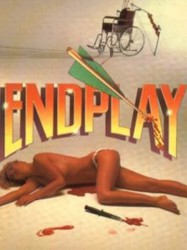
End Play (1976)
, 1h54Réalisé par Tim Burstall
Genres Thriller
Thèmes La mer, Transport
Acteurs George Mallaby, John Waters, Delvene Delaney, Bud Tingwell, Belinda Giblin, Sheila Florance
Rôle Mavis Lipton
Note63%





Hitchhiker Janine Talbort is picked up and murdered by an unseen assailant. Mark Gifford, a merchant sailor on leave, then disposes of the body, attracting the suspicion of his wheelchair bound brother Robert. The police become suspicious of both brothers, who are rivals over their half-cousin, Margaret.

Illuminations (1976)
, 1h14Réalisé par Paul Cox
Genres Drame
Acteurs Norman Kaye, Sheila Florance
A couple living together have a tense relationship. The woman's father dies and she becomes preoccupied with death. She almost drowns in the bath but then recovers her enthusiasm for life.
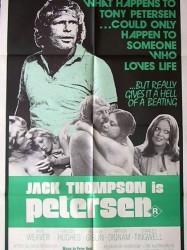
Petersen (1974)
, 1h47Réalisé par Tim Burstall
Genres Drame
Acteurs Jack Thompson, Jacki Weaver, Wendy Hughes, Belinda Giblin, Arthur Dignam, Bud Tingwell
Rôle Tony's Mother
Note64%





Tony Petersen is an electrical tradesman and former football star who is studying arts at the University of Melbourne, and majoring in English. Despite being married to adoring wife Susie, he is having an affair with his lecturer, Trish Kent, and has a fling with student Moira as part of a protest. Trish's husband Charles fails Petersen in his exams and Trish leaves for Oxford. Petersen rapes Trish and returns to his old life.

Country Town (1971)
, 1h46Genres Drame
Acteurs Gary Gray, Lynette Curran, Gerard Maguire, Maurie Fields, Sheila Florance, Kirsty Child
A severe drought strikes the town of Bellbird. Young reporter Philip Henderson arrives and stirs old tensions. The locals rally together and hold a fund-raising gymkhana.

Argile (1965)
, 1h25Réalisé par Giorgio Mangiamele
Genres Drame
Acteurs Bobby Clark, Sheila Florance
Rôle Deaf-mute
Note65%





Nick is a murderer on the run from the police. He finds a remote artists' colony and takes shelter there. Whilst there, he falls in love with a sculptor named Margot. When Nick is betrayed to the police by a jealous rival, Chris, Margot kills herself.
 Connexion
Connexion

